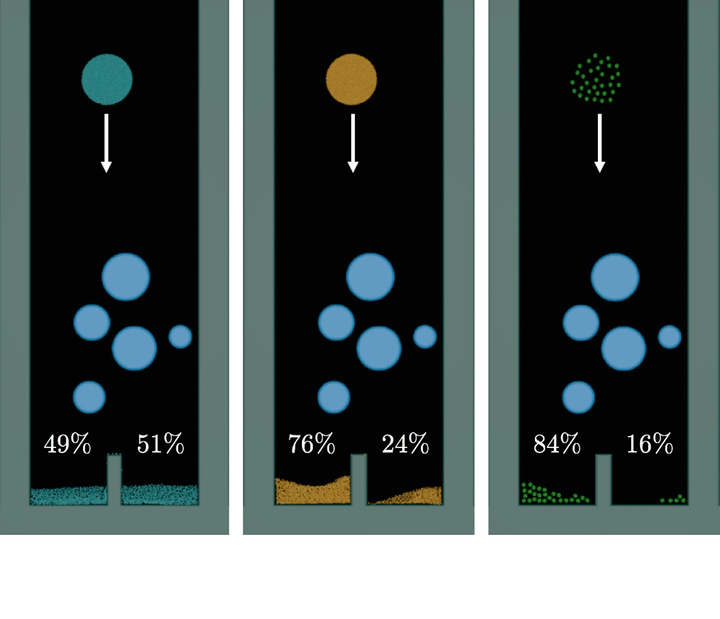[CogSci17] Consistent Probabilistic Simulation Underlying Human Judgment in Substance Dynamics
 Initial (top) and final (bottom) state of liquid (left), sand (middle), and a set of rigid balls (right) for a testing trial in Experiment 2 with 5 obstacles. The percentages indicate the amount of each substance that fell into the left and right basins. Only the initial state of each substance was shown in the testing trials.
Initial (top) and final (bottom) state of liquid (left), sand (middle), and a set of rigid balls (right) for a testing trial in Experiment 2 with 5 obstacles. The percentages indicate the amount of each substance that fell into the left and right basins. Only the initial state of each substance was shown in the testing trials.Abstract
A growing body of evidence supports the hypothesis that humans infer future states of perceived physical situations by propagating noisy representations forward in time using rational (approximate) physics. In the present study, we examine whether humans are able to predict (1) the resting geometry of sand pouring from a funnel and (2) the dynamics of three substances—liquid, sand, and rigid balls—flowing past obstacles into two basins. Participants’ judgments in each experiment are consistent with simulation results from the intuitive substance engine (ISE) model, which employs a Material Point Method (MPM) simulator with noisy inputs. The ISE outperforms ground-truth physical models in each situation, as well as two data-driven models. The results reported herein expand on previous work proposing human use of mental simulation in physical reasoning and demonstrate human proficiency in predicting the dynamics of sand, a substance that is less common in daily life than liquid or rigid objects.